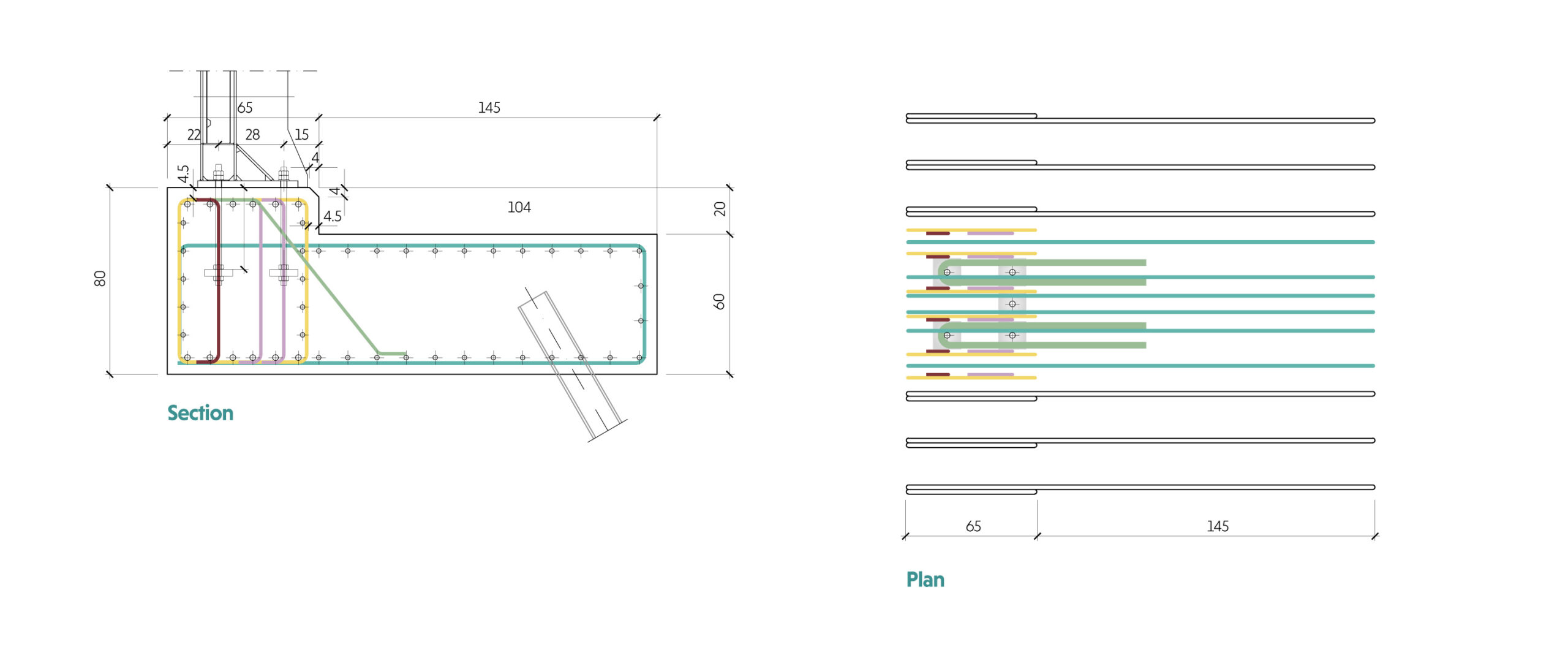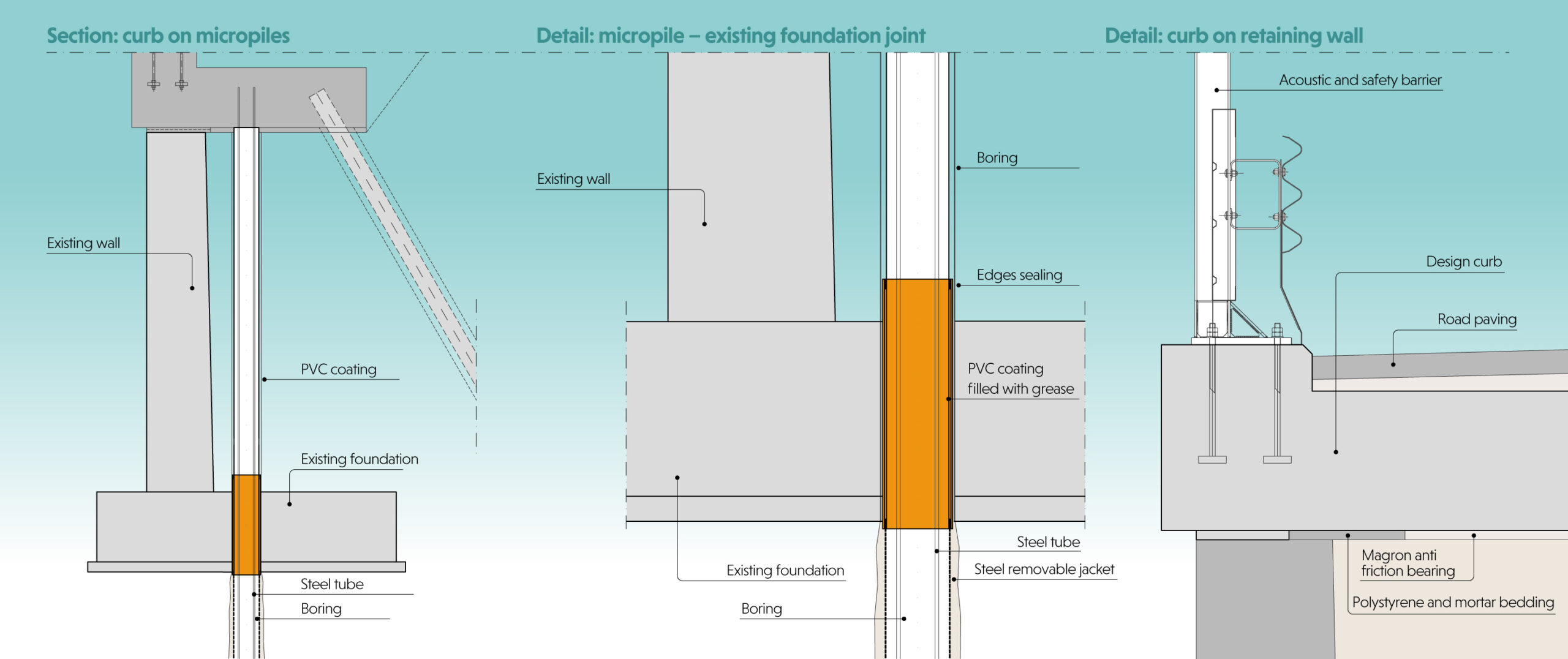Final Design of the works for the replacement of the integrated barriers
Technical innovation for motorway safety.
Autostrade per l’Italia has recently started a vast programme to replace the integrated barriers currently found on the motorway network. A new model of safety and noise protection barrier has been patented; named Integautos 2.0, it performs better than the existing barriers.
NET Engineering was responsible for the Final Design of the extraordinary maintenance replacing the old integrated barriers and the installation of the “Class H4 integrated bridge side or roadside safety and noise protection barriers – Integautos 2.0” along various sections of the motorway network.






Structural and geotechnical surveys and vulnerability assessments were carried out to ensure respect for current legislation on the construction and anchorage of the barriers to the support element and determine the compatibility of the current walls and kerbs with the new installations. This highlighted that the existing works offer limited, uncertain or even no guarantee of ability to act as structural and support elements for the new barriers. As a result, a new reinforced concrete kerb was designed clearly overlaying the existing works and which, although keeping the volume of this road section unchanged, can lighten its structural effort, especially knocks from turning/swerving vehicles and the wind.
This is a specially reliable, ad hoc kerb, able to respond to the expected structural behaviour with stability and safety features established by legislation for travellers and noise protection for receptors near to the motorway.
The work designed by NET Engineering is innovative for various reasons. The new reinforced concrete kerb has been designed for motorway sections on an embankment with support walls, and small yet frequent bridge structures. The standard solution sets out a structure above the existing wall, previously cut down at the top, supported on one side with a foundation with a single line of slanting micro-stakes, not interacting with the wall and, on the other side, an anti-friction support system applied to the top of the wall. This technological detail has been specially designed to reduce resistance to horizontal movement between the existing wall and the new kerb laid on it to the minimum. The operation obtained enables the existing wall to be relieved of the destabilising horizontal action from knocks and partly the existing soil filler, transferring to the wall only a component of stabilising vertical load. The remaining action is transferred to the ground by the new deep foundation.
The particularly high stress transmitted to the anchoring node is absorbed by the new kerb in which the detail of the armature is designed with mechanical precision. At the same time, that detail is organised so that prefabrication can be made and so rapid and exact execution ensured. Lastly, the weight and geometry of the structure ensure its wind stability.
An important condition to the sizing of the work is dictated by the limitations on volume set out by the client to reduce the area of the roadworks during the work on the roadside as much as possible and ensure respect of the border with the private properties adjoining the motorway, especially in the highly built-up sections.
Alongside this type of standard solution, the NET Engineering project indicates some variants which allow the new kerb to be included along the walls at a lower height or when there are non-removable side obstacles and in correspondence with structures with reduced light that can be climbed over.
NET Engineering’s answer enables the integrated barriers on motorway sections to be modernised quickly and easily, contributing to an increase in the safety level of users and attention to the area. At the same time, it responds to the rapidity with which the operators intend to intervene.


